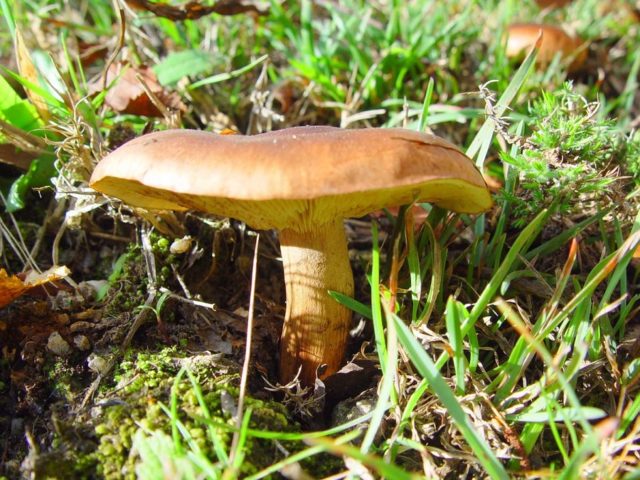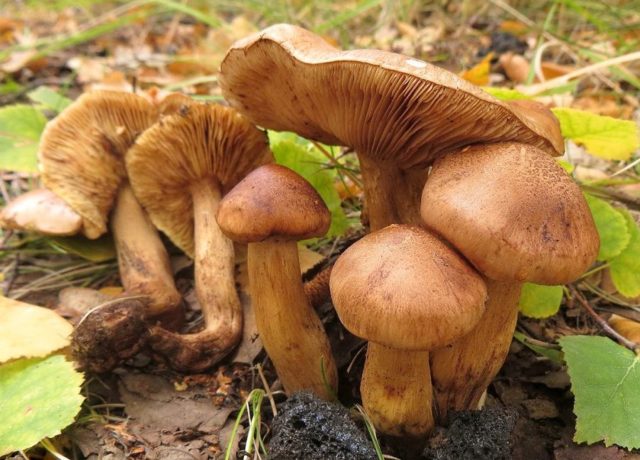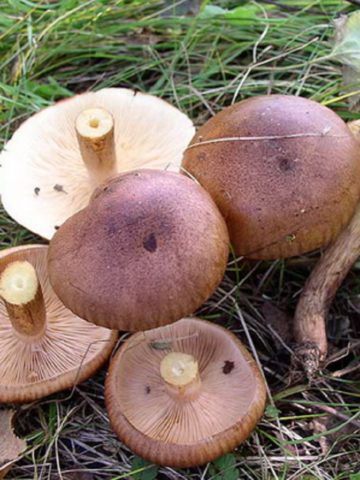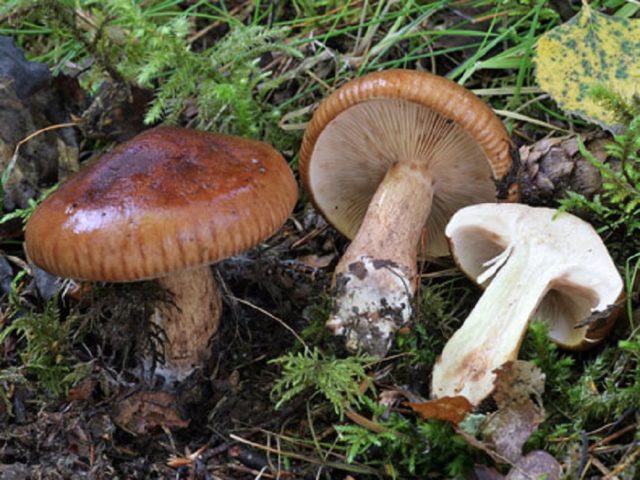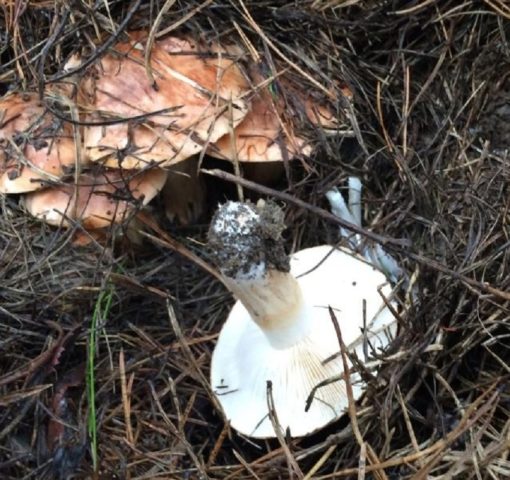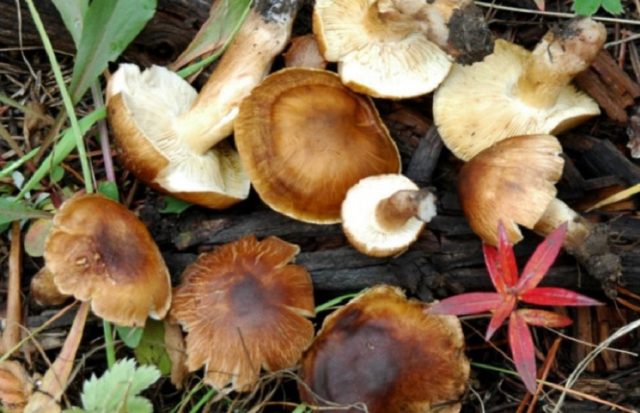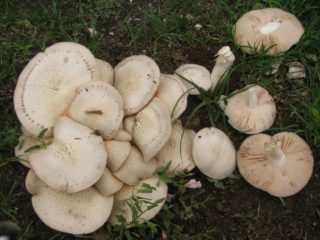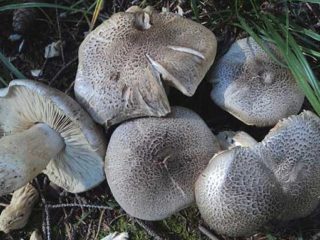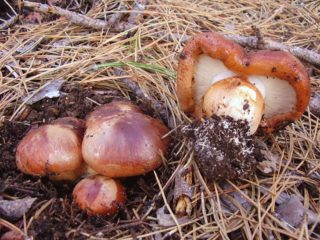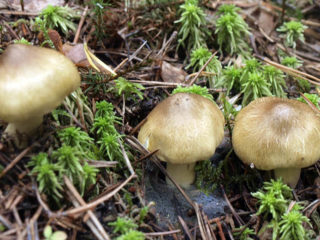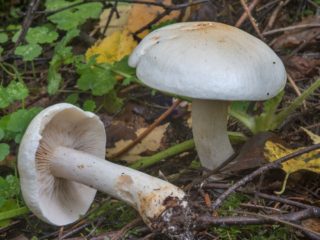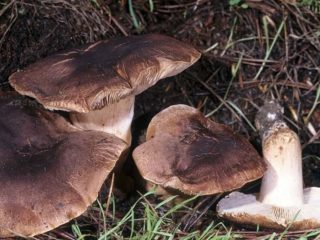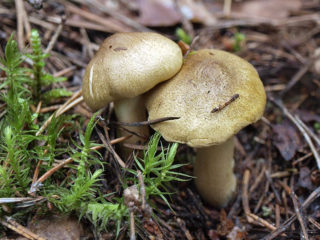Content
Ryadovka yellow-brown is a representative of the large family of Ryadovkov. The Latin name is Tricholoma fulvum, but besides this, it has many other names. Some are given by mushroom pickers, others by the scientific community. Popularly, the mushroom is called pathology, nut mushroom. Scientists have assigned several botanical synonyms - yellow-brown, brown, red-brown, brown-yellow (Tricholoma flavobrunneum).
Where does the yellow-brown row grow?
The variety prefers deciduous or coniferous plantings, sometimes found in mixed ones. It forms mycorrhiza well with oak, birch, beech, and pine. Most often found near birch trees. Fruiting bodies grow singly (rarely), as well as in large clusters, which are called “witch circles.”
Fruiting begins in August and lasts until mid-September. The brown variety tolerates dry weather well, so fruiting activity remains stable throughout this period. On the territory of Russia it is distributed in the middle part, in the Far East, the Urals, and the northern region.
What does a yellow-brown row mushroom look like?
The main parts of the fruiting body are:
- hat;
- hymenophore;
- leg;
- disputes.
To get a complete picture of what the yellow-brown tricholoma of the family looks like, you need to study each part in detail. A detailed description and photo of the yellow-brown form will help mushroom pickers to easily identify this type of row in the forest.
The cap is the most unique part of the mushroom. It can have different shapes, making it difficult to determine the species. Especially inexperienced mushroom pickers. Some specimens can be found with a flattened cap, others with a widely spread one, and still others with a cone-shaped convex one.
The main distinguishing feature remains the low tubercle protruding in the center of the cap. The diameter varies from 3 cm to 15 cm. This variation is explained by the difference in the shape of the cap. The surface is sticky, the color is rich yellow-brown. In some cases, there is a reddish tint on the mushroom cap. Overripe specimens have a scaly cap and wrinkled edges. The surface is dry, but after getting wet it becomes slippery to the touch.The flesh of the cap is medium fleshy and yellowish in color, the taste is bitter, the smell is mealy.
The leg of the yellow-brown row is thin and high. The length ranges from 7 cm to 15 cm, and the diameter is no more than 2.5 cm. At the top, the stem of the mushroom is solid, and voids appear in it closer to the bottom. Also, the color of the stem of the brown row changes. At the top it is identical to the color of the cap, at the bottom it is darker. The flesh of the leg is fibrous.
The plates are wide, frequent, and sinuous. Mature mushrooms acquire a brown color and grow to the fruiting body. Young rows have cream-colored plates.
Is it possible to eat the yellow-brown row?
Science has classified the species into category 4 of conditionally edible mushrooms. This means that they are suitable for food only after preliminary heat treatment.
Poisoning manifests itself with general symptoms after 1-3 hours (nausea, dizziness, abnormal bowel movements, abdominal pain, vomiting).
Taste qualities of mushroom
The yellow-brown row is inferior to many species in its taste characteristics. The fruiting bodies are bitter, especially older specimens. It is recommended to soak them overnight before cooking. A lot of dishes are prepared from the mushroom, but many consider it tasteless due to the presence of bitterness. However, some gourmets consider this taste to be very piquant.
Benefits and harm to the body
The composition of the yellow-brown row is quite rich. It contains minerals, vitamins, amino acids. This set determines the beneficial properties of the mushroom:
- antioxidant;
- antiviral;
- immunomodulatory;
- anti-inflammatory.
When consuming the mushroom, the functioning of the brain, circulatory system, and blood vessels improves, efficiency increases, and the body is cleansed of poisons and toxins. Cosmetic products, medicinal infusions and lotions are made on the basis of the yellow row. The mushroom is a natural antibiotic.
The harmful effect may manifest itself in the form of poisoning. Fungi accumulate toxins and harmful substances from the soil or surrounding area. You should be especially wary of overripe fruiting bodies. Dust has the most time to settle on them. It is not recommended to include dishes with a yellow-brown row for people with diseases of the intestines, stomach, or gall bladder. They can cause exacerbation of the chronic course of the disease.
False doubles
A huge list of rows is the reason why mushroom pickers can confuse varieties. The yellow-brown row is similar to several representatives of the genus:
- Poplar row (Tricholoma populinum). This type of plate has a different color - cream or white. Also, the flesh under the skin is a little reddish in color. You can distinguish the variety by its stem. It is thicker and shorter, and when pressed, brown spots form on it. It grows under poplars and is common in the European part of the Russian Federation and Siberia. Included in the category of edible mushrooms.
- White-brown (Tricholoma albobrunneum). The main difference is the snow-white flesh without brown inclusions or tint. The cap is brown with dark veins. There is no consensus on the edibility of the species. Some sources classify the white-brown row as conditionally edible, others as edible, and foreign publications consider it inedible.
- Yellow-red (Tricholom opsisrutilans). Also a mushroom of the conditionally edible category. It differs in the color of the cap, on which there are red-brown scales.Young specimens have a bitter taste.
Collection rules
The first rule is to find a place where the yellow-brown row prefers to grow. It can be a birch forest, mixed, or less often coniferous. Then:
- “Silent hunting” can be started during the fruiting season of the species.
- Try to collect mushrooms in places away from roads.
- Take young specimens.
- You can cut the leg with a knife, you can twist it. For rowing, this does not matter much.
Place the collected mushrooms in a basket and process them the same day. It is not recommended to leave it raw for the next day. A visual overview of the process:
How to prepare yellow-brown row
The species is suitable for salting, freezing, stewing, frying, drying, boiling. A very versatile mushroom. Goes well with potatoes and onions. For yellow-brown rowing, preliminary preparation is required. The collected mushrooms are soaked for 1 hour, then boiled. After boiling, drain the first water, then add new liquid and cook for 40 minutes. Ready-made rows are used for salads, first and second courses. The species goes well with other mushrooms. If you decide to dry the fruiting bodies, you should not soak them. It is enough to clean thoroughly from leaves, dirt and dust, then hang to dry. In the future, to prepare a dish from dried fruit bodies, you will need to soak and boil them.
Conclusion
The yellow-brown row is a very useful mushroom. By following the cooking rules, you can significantly reduce the degree of bitterness of the fruiting bodies and get nutritious dishes for every taste.
